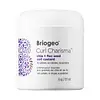What's inside
What's inside
 Key Ingredients
Key Ingredients

No key ingredients
 Benefits
Benefits

 Concerns
Concerns

 Ingredients Side-by-side
Ingredients Side-by-side

Isododecane
EmollientCyclopentasiloxane
EmollientDimethicone
EmollientPhenyl Trimethicone
Skin ConditioningTocopherol
AntioxidantPersea Gratissima Oil
Skin ConditioningCrambe Abyssinica Seed Oil
Skin ConditioningAscorbic Acid
AntioxidantGlycerin
HumectantPolysilicone-15
UV FilterSuperoxide Dismutase
AntioxidantCaviar Extract
Skin ConditioningAlaria Esculenta Extract
Skin ProtectingSodium Hyaluronate
HumectantSaccharomyces/Magnesium Ferment
Saccharomyces/Copper Ferment
Skin ConditioningSaccharomyces/Silicon Ferment
Skin ConditioningSaccharomyces/Zinc Ferment
Skin ConditioningSaccharomyces/Iron Ferment
Skin ConditioningWater
Skin ConditioningPhospholipids
Skin ConditioningHelianthus Annuus Seed Oil
EmollientButylene Glycol
HumectantPotassium Sorbate
PreservativePhenoxyethanol
PreservativeParfum
MaskingIsododecane, Cyclopentasiloxane, Dimethicone, Phenyl Trimethicone, Tocopherol, Persea Gratissima Oil, Crambe Abyssinica Seed Oil, Ascorbic Acid, Glycerin, Polysilicone-15, Superoxide Dismutase, Caviar Extract, Alaria Esculenta Extract, Sodium Hyaluronate, Saccharomyces/Magnesium Ferment, Saccharomyces/Copper Ferment, Saccharomyces/Silicon Ferment, Saccharomyces/Zinc Ferment, Saccharomyces/Iron Ferment, Water, Phospholipids, Helianthus Annuus Seed Oil, Butylene Glycol, Potassium Sorbate, Phenoxyethanol, Parfum
Water
Skin ConditioningRicinus Communis Seed Oil
MaskingCetearyl Alcohol
EmollientCetearyl Olivate
Glycerin
HumectantSorbitan Olivate
EmulsifyingButyrospermum Parkii Butter
Skin ConditioningOryza Sativa Extract
AbsorbentRice Amino Acids
Skin ConditioningHydrolyzed Quinoa
Skin ConditioningKeratin Amino Acids
Skin ConditioningPersea Gratissima Oil
Skin ConditioningLinum Usitatissimum Seed Oil
PerfumingLeuconostoc/Radish Root Ferment Filtrate
AntimicrobialSalvia Hispanica Seed Oil
MoisturisingLactobacillus/Tomato Fruit Ferment Extract
Skin ConditioningCellulose Gum
Emulsion StabilisingXanthan Gum
EmulsifyingMicrocrystalline Cellulose
AbsorbentAcyl Coenzyme A Desaturase
Skin ConditioningParfum
MaskingDehydroacetic Acid
PreservativeBenzyl Alcohol
PerfumingWater, Ricinus Communis Seed Oil, Cetearyl Alcohol, Cetearyl Olivate, Glycerin, Sorbitan Olivate, Butyrospermum Parkii Butter, Oryza Sativa Extract, Rice Amino Acids, Hydrolyzed Quinoa, Keratin Amino Acids, Persea Gratissima Oil, Linum Usitatissimum Seed Oil, Leuconostoc/Radish Root Ferment Filtrate, Salvia Hispanica Seed Oil, Lactobacillus/Tomato Fruit Ferment Extract, Cellulose Gum, Xanthan Gum, Microcrystalline Cellulose, Acyl Coenzyme A Desaturase, Parfum, Dehydroacetic Acid, Benzyl Alcohol
Alternatives
Ingredients Explained
These ingredients are found in both products.
Ingredients higher up in an ingredient list are typically present in a larger amount.
Glycerin is already naturally found in your skin. It helps moisturize and protect your skin.
A study from 2016 found glycerin to be more effective as a humectant than AHAs and hyaluronic acid.
As a humectant, it helps the skin stay hydrated by pulling moisture to your skin. The low molecular weight of glycerin allows it to pull moisture into the deeper layers of your skin.
Hydrated skin improves your skin barrier; Your skin barrier helps protect against irritants and bacteria.
Glycerin has also been found to have antimicrobial and antiviral properties. Due to these properties, glycerin is often used in wound and burn treatments.
In cosmetics, glycerin is usually derived from plants such as soybean or palm. However, it can also be sourced from animals, such as tallow or animal fat.
This ingredient is organic, colorless, odorless, and non-toxic.
Glycerin is the name for this ingredient in American English. British English uses Glycerol/Glycerine.
Learn more about GlycerinParfum is a catch-all term for an ingredient or more that is used to give a scent to products.
Also called "fragrance", this ingredient can be a blend of hundreds of chemicals or plant oils. This means every product with "fragrance" or "parfum" in the ingredients list is a different mixture.
For instance, Habanolide is a proprietary trade name for a specific aroma chemical. When used as a fragrance ingredient in cosmetics, most aroma chemicals fall under the broad labeling category of “FRAGRANCE” or “PARFUM” according to EU and US regulations.
The term 'parfum' or 'fragrance' is not regulated in many countries. In many cases, it is up to the brand to define this term.
For instance, many brands choose to label themselves as "fragrance-free" because they are not using synthetic fragrances. However, their products may still contain ingredients such as essential oils that are considered a fragrance by INCI standards.
One example is Calendula flower extract. Calendula is an essential oil that still imparts a scent or 'fragrance'.
Depending on the blend, the ingredients in the mixture can cause allergies and sensitivities on the skin. Some ingredients that are known EU allergens include linalool and citronellol.
Parfum can also be used to mask or cover an unpleasant scent.
The bottom line is: not all fragrances/parfum/ingredients are created equally. If you are worried about fragrances, we recommend taking a closer look at an ingredient. And of course, we always recommend speaking with a professional.
Learn more about ParfumPersea Gratissima Oil is also known as avocado oil.
Avocado Oil has antioxidant properties. It is mostly made up of the glycerides of fatty acids. About 67% of these fatty acids is made up of oleic acid. Palmitic acid and linoleic acid are also present.
These fatty acids help hydrate and soften the skin. It may increase collagen content in the skin. Collagen helps keep your skin plump and firm. This ingredient helps reduce inflammation and has not shown to clog pores.
This ingredient may not be fungal-acne safe due to its high fatty acid content.
Avocados also have B vitamins, vitamin K, vitamin C, vitamin E, and potassium.
Learn more about Persea Gratissima OilWater. It's the most common cosmetic ingredient of all. You'll usually see it at the top of ingredient lists, meaning that it makes up the largest part of the product.
So why is it so popular? Water most often acts as a solvent - this means that it helps dissolve other ingredients into the formulation.
You'll also recognize water as that liquid we all need to stay alive. If you see this, drink a glass of water. Stay hydrated!
Learn more about Water